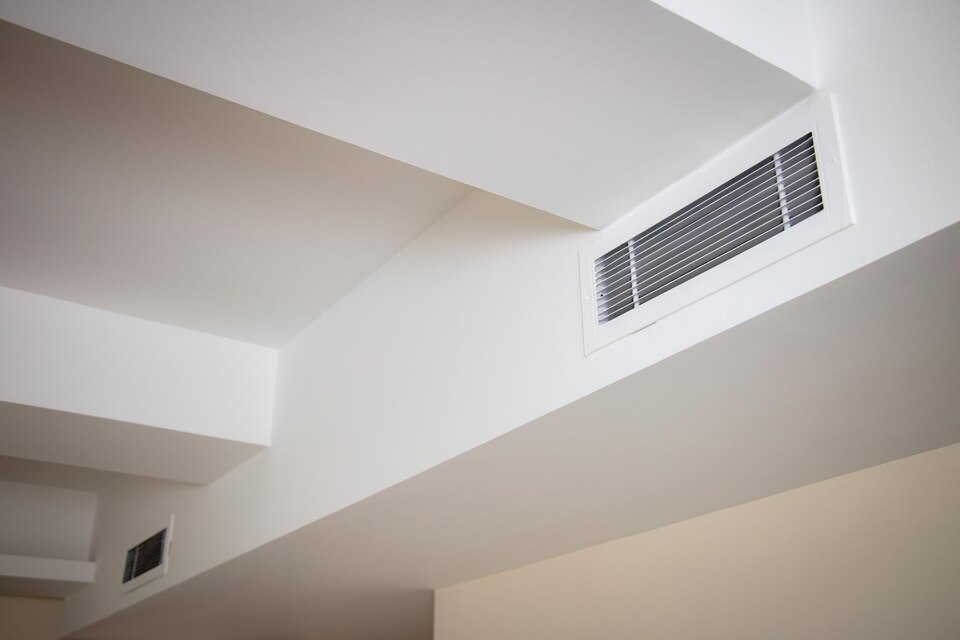Homeowners in Frisco often focus on their air conditioning unit itself when cooling problems arise, but the ductwork that moves air throughout the home plays just as big a role. These ducts can develop issues over time that lead to discomfort, uneven temperatures, and higher monthly bills. When your AC is running but rooms still feel too warm or stuffy, the problem could be in the ducts connecting everything together.
AC ductwork runs behind walls, ceilings, and floors. Because it is largely hidden, it is easy to miss problems until they start affecting indoor comfort. Some of the earliest signs may seem small, but if ignored, duct issues can cause the system to work harder than it should. That leads to poor air quality and strain on your air conditioning equipment. The sooner you spot the signs, the sooner you can get things back on track.
Uneven Cooling Across Your Home
When some rooms in your home stay cooler than others, especially during high-heat months like June, that is often a sign your ductwork is not delivering air efficiently. If an upstairs bedroom is warm while the downstairs living room is freezing, your AC may be working harder than it needs to. Inconsistent airflow can throw off your whole cooling setup.
There are several possible reasons ductwork causes uneven cooling in Frisco homes:
1. Ducts may have small leaks or gaps that allow cool air to escape before reaching certain rooms.
2. A build-up of dust and debris inside the ducts can restrict the amount of air getting through.
3. Sections of ductwork might be crushed, blocked, or not properly connected during earlier installations or remodel work.
4. Poor design from when the house was built could mean ducts were not sized or routed correctly for each room.
We have seen cases where a family notices their home office always runs warmer than the guest room, even when the AC is working all day. They might check doors, vents, or the thermostat, when in fact, the issue is buried behind a wall with a kinked or leaking air duct. Addressing inconsistent comfort starts with checking if your ducts are moving air as they should to every room.
Strange Noises From Your Ducts
It is normal to hear a soft hum or whooshing sound when your AC kicks on, but certain sounds should raise concern. Ductwork that is damaged or loose can start to produce noises that are more than background sounds. If you hear unusual clanks, pops, or rattles, especially close to vents or ceilings, your ducts might need attention.
Some common duct-related noises include:
1. Banging: Often caused by loosely connected ducts shifting from air pressure.
2. Rattling: Could be a result of screws or fasteners coming loose in the ducts.
3. Whistling: Usually means there is a leak somewhere pulling in outside air or losing conditioned air.
4. Hissing: May signal a larger crack or tear in the duct insulation or lining.
These noises are not just annoying. They often signal that air is not traveling the way it should, which can cause certain rooms to heat up quickly or not cool down at all. Waiting too long might lead to more serious problems, like dust blowing into the home or reduced efficiency across your system. If you are hearing unusual sounds when your system is on, it can help to jot down where and when they occur, then have our technicians inspect for loose connections, openings, or worn seals. Persistent noise is usually your system’s way of signaling a deeper problem.
Increased Energy Bills
When your AC seems to be running longer than usual and your energy bills start creeping up for no clear reason, the ductwork could be a factor. Poorly sealed or damaged ducts can push your system to work harder just to cool down the house like it used to. Instead of all that cool air reaching your rooms, a portion may be escaping through gaps or cracks.
Even if the unit itself is working fine, airflow restrictions or leaks in the ducts can force the system to cycle more often. That means higher energy use, rising bills, and added wear on your air conditioner. Energy loss through bad ductwork is hard to see, but you will often notice the symptoms through:
1. Bills going up even if your usage patterns have not changed.
2. Rooms taking much longer to cool in the afternoon heat.
3. Your AC running constantly, barely reaching set temperatures.
One Frisco homeowner noticed a sharp increase in energy costs after finishing out a bonus room over the garage. It turned out their existing ducts could not sufficiently supply the space and had small breaks from years of wear. Once those were repaired and adjusted, their cooling system stopped running nonstop. If your monthly costs do not match your expectations, take a closer look at the duct network behind the walls.
Visible Signs Of Wear And Tear
Some signs of failing ductwork are easy to overlook, but with a quick inspection in areas like the attic or crawl space, you might spot warning signs. While AC components are mostly hidden, visible parts of your duct system may show problems when it is time for repairs or replacement.
Watch for the following:
1. Heavy dust accumulation near vents, which can mean leaks.
2. Unusual dents, collapsed sections, or disconnected duct lines.
3. Musty or stale odors coming from your vents.
4. Spots where ducts are loosely held in place or poorly sealed.
5. Insulation peeling or breaking off around flexible ducts.
These signs do not always mean a complete replacement is needed, but they are solid indicators that something is not working right. One poorly sealed joint or dented elbow can compromise airflow throughout your system. Without addressing that, it is easy for humidity or warm spots to take over certain rooms.
Even minor visible issues have a way of growing inside a home. Over time, gaps can widen, insulation can degrade, and your AC begins to struggle. That is why inspecting ductwork during seasonal changes or planning regular professional checks can help you catch problems early and avoid major repairs later.
Keeping Your AC Ductwork Running Smoothly
Ductwork is like the infrastructure of your cooling system, and when it starts to fail, comfort takes a hit. Signs like uneven cooling, new noises, high energy bills, and visible wear usually do not come out of nowhere. They are warnings that your airflow system might not be working efficiently or cleanly anymore.
If you are living in Frisco and starting to notice any one of these problems, acting quickly helps stop small issues from becoming larger ones during the hottest months. Staying ahead of pressure leaks, airflow gaps, or insulation problems means your system does not just run, it runs the way it should. That helps keep every room cool and your bills manageable.
Even though ductwork tends to stay out of sight, it should not stay out of mind. Keeping your system efficient and your living space comfortable starts with giving your ductwork the attention it needs. Our technicians can inspect, repair, and improve your system before it affects your comfort any further.
If your home in Frisco is showing signs of ductwork wear that disrupts your cooling, Lifetime’z Air understands the impact this can have on your comfort and energy bills. Our professionals are available to inspect your ducts and address issues before they grow larger. Learn more about AC repair in Frisco to ensure your system runs efficiently and every room stays cool. For a quick estimate or to book a service visit, please contact us today.




